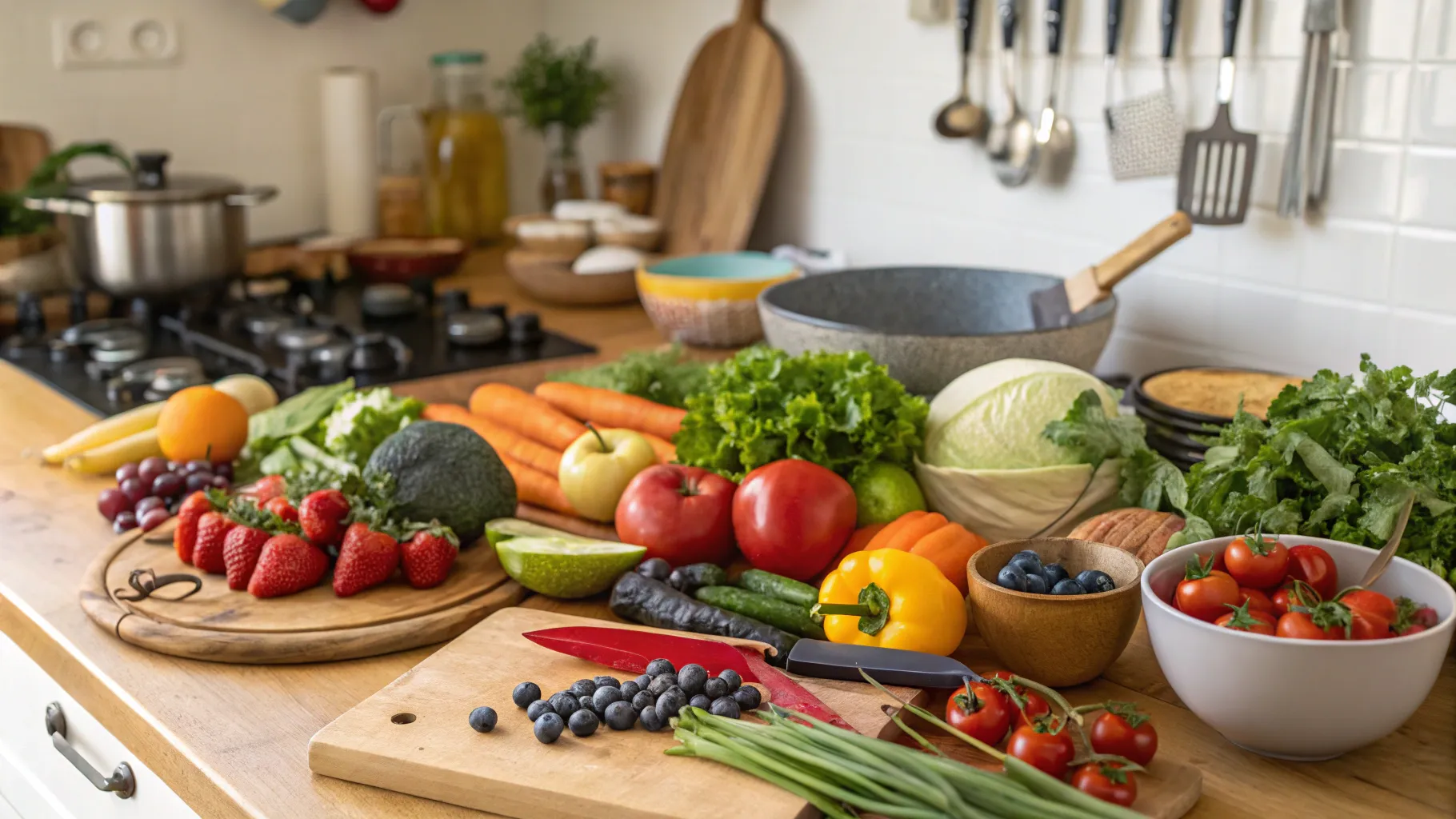
Cooking a delicious meal at home doesn’t have to be complicated or intimidating. Over the years, I’ve spent my life learning what truly makes a great chef—not through culinary school, but in real-life restaurant kitchens. Along the way, I picked up hundreds of practical, easy-to-apply tricks that can transform your cooking recipe and make your kitchen experience both fun and efficient.
Whether you’re aiming for a tasty recipe or perfecting an american recipe, these 100 chef hacks will help you cook smarter, save time, and bring restaurant-quality results to your home table. Let’s dive right in!
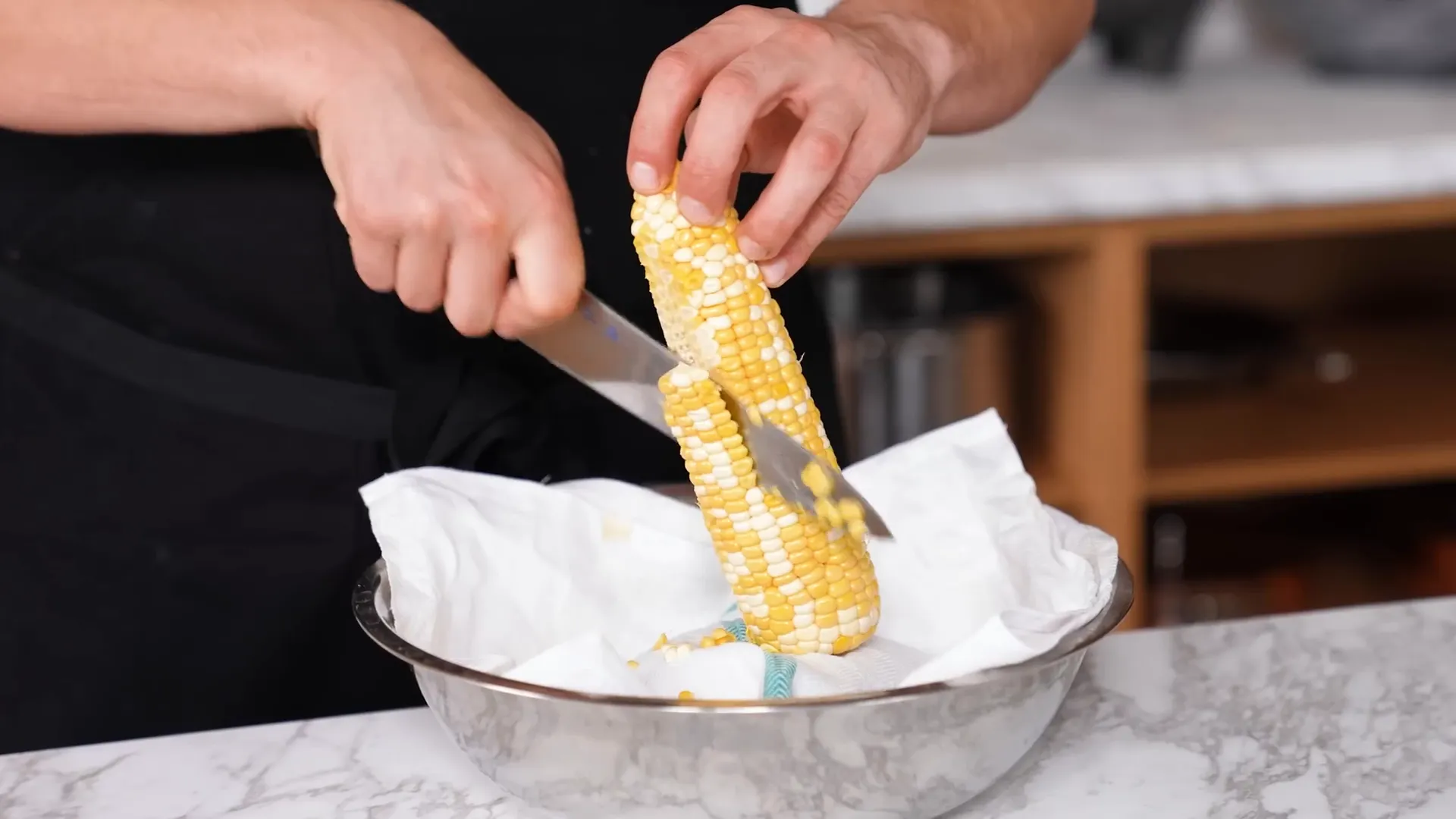
Step 1: Master the Basics of Produce and Storage
How to Properly Wash Produce
To keep your fruits and vegetables fresh longer and clean from any nasties, mix three parts water with one part vinegar in a bowl. Toss your produce in this mixture and let it sit for 2-5 minutes. Then, drain, rinse under water, lightly dry, and store in the fridge. This simple step keeps your produce crisp and free from any unwanted residue.
Upgrade Your Storage Containers
Forget Tupperware. Instead, invest in deli containers—they come in pint and quart sizes, all with the same lid for stacking ease. These containers are the industry standard for a reason: they stack beautifully, seal tightly, and store everything from leftovers to prepped ingredients efficiently.
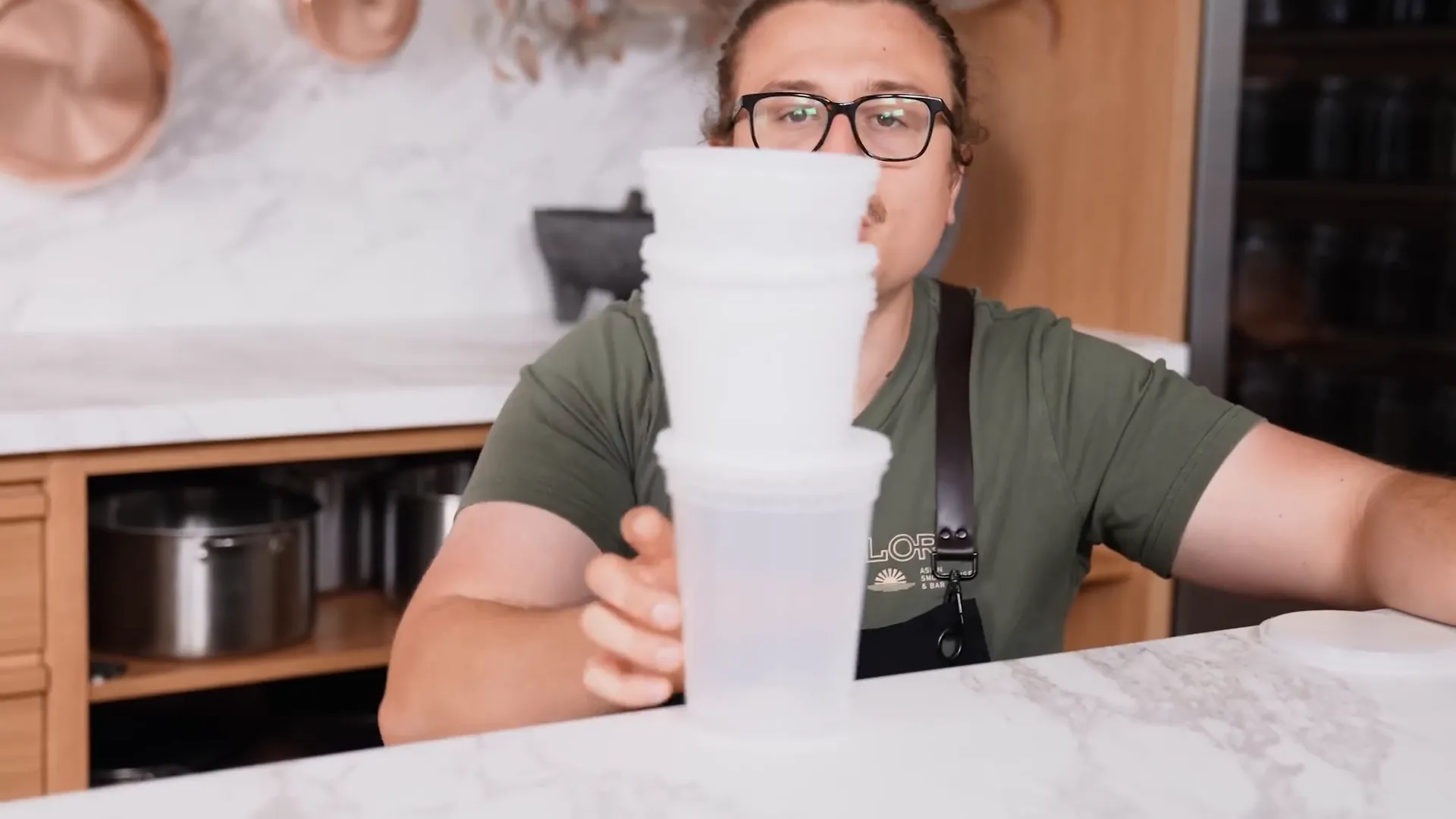
The Cartouche: DIY Lid for Pots Without One
Don’t have a lid for your pot? No problem. Make a cartouche with parchment paper! Fold a sheet of parchment lengthwise twice, then fold it into a paper-plane shape. Trim the tip, place it over your pot, mark the edges, cut, and unfold. This homemade lid helps keep moisture in while cooking.
Step 2: Speed Up Prep with Clever Shortcuts
Peeling Garlic in Bulk
Instead of peeling cloves one by one, try the bowl-shaking trick: place cloves in a bowl, cover with another bowl, and shake vigorously. If some cloves still cling to their skins, add warm water and let sit for two minutes—skins will slide right off.
Instant Shredded Chicken
Got cooked chicken breast? Forget forks and hands. Throw the chicken into a bowl and use electric beaters to shred it quickly and effortlessly. This hack saves time and keeps your hands clean.
Why Chicken Thighs Are Your Best Friend
Chicken breast is notoriously tricky to cook perfectly—just one degree too hot and it dries out. Chicken thighs, on the other hand, are forgiving, juicier, and packed with flavor. If you’re not strictly against dark meat, switch to thighs for most recipes.
Keep Mixing Bowls Steady
Wrap a damp towel around your bowl and place it on your countertop to prevent it from sliding while whisking. This simple hack makes mixing smoother and less frustrating.
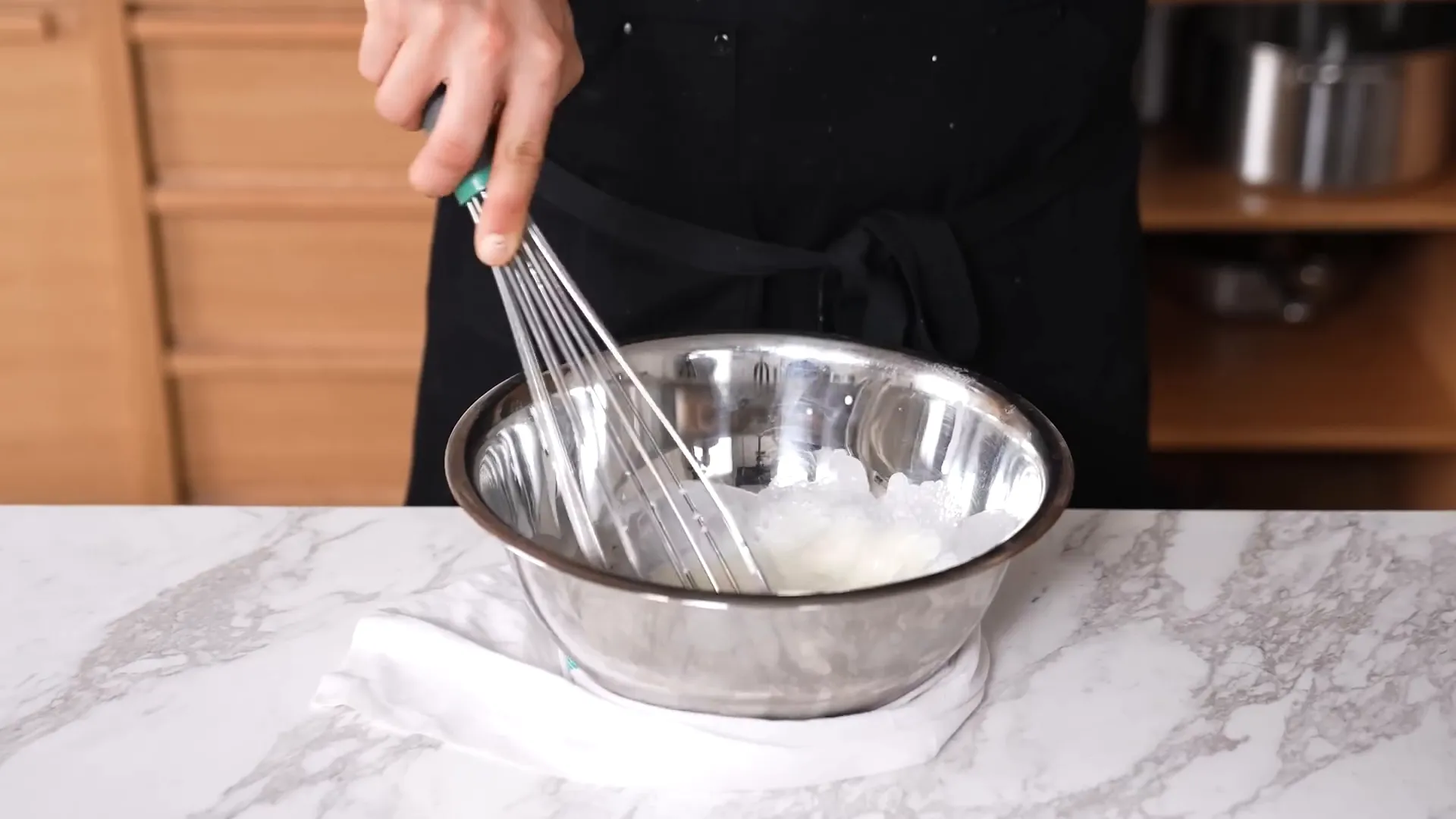
Paper Towel Lid for Pickling
If you’re making pickles or anything that needs to stay submerged in liquid inside a jar, use a folded paper towel gently pressed onto the surface to keep ingredients submerged. The surface tension creates a seal that helps preserve your pickles longer.
Step 3: Fix Common Cooking Mistakes
Fix Oil That's Too Hot for Frying
When your frying oil overheats (above 400°F), simply add room temperature oil to cool it down to the desired temperature. Be careful not to overfill your pot; remove some oil if needed before adding more.
Salt Your Tomatoes Before Sandwiching
Don’t just slap tomatoes on your sandwich and hope for the best. Season both sides of the tomato slices with salt before assembling. This simple hack amplifies flavor and prevents watery, bland bites.
Cleaning Flour Off Your Hands
After mixing dough, instead of washing immediately, rub dry flour on your hands as if you’re lathering soap. This loosens sticky dough and makes washing off easier without clogging your sink or garbage disposal.
Perfectly Peeled Eggs Every Time
After boiling eggs, crack them lightly on one side, roll to create fine cracks all over, then peel underwater in a bowl. The water helps separate the shell, making peeling smooth and effortless.
Step 4: Prep Like a Pro with Tools and Techniques
Wire Rack Dicing
Need to dice soft foods like hard-boiled eggs or cooked potatoes quickly? Place a wire rack over a bowl and push the food through it. This hack is popular in restaurants for speedy egg salad prep.
Maximize Citrus Zesting
Hold your microplane firmly in the middle, grip the citrus with your thumb pushing up, and rotate the fruit with your arms closed. This technique maximizes zest extraction and gives you beautiful, fine zest.
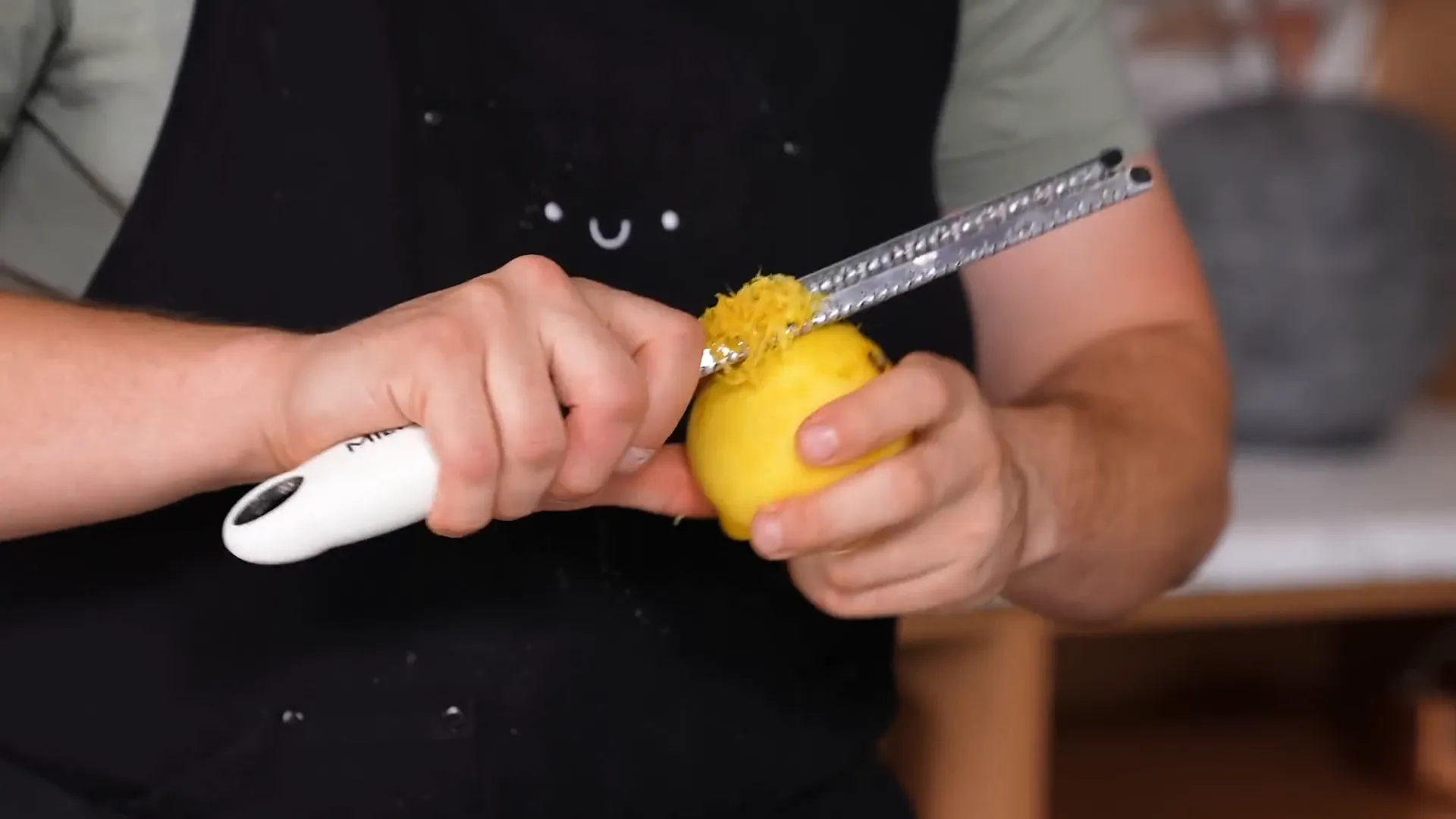
Use Kitchen Shears for Everything
Kitchen scissors aren’t just for paper—they’re fantastic for cutting vegetables, herbs, and even meat directly into pots, bowls, or plates. This saves time and reduces mess.
Parchment Paper Cleanup
When peeling potatoes or similar tasks, do it over a sheet of parchment paper. Collect the peels on the paper, then fold and toss it for a quick, no-mess cleanup.
Seasoning High for Even Coverage
When seasoning meat or vegetables, sprinkle salt from a height rather than close up. This spreads the salt evenly over the surface, enhancing flavor with less risk of over-salting.
Step 5: Rescue Sauces and Emulsions
Xanthan Gum for Sauce Stability
If your sauce or soup separates after sitting, blend it again and add about an eighth teaspoon of xanthan gum while blending. This stabilizes the sauce and prevents separation.
Fix Broken Mayonnaise
If your mayo breaks (oil separates), whisk together two fresh egg yolks, a teaspoon of Dijon mustard, and a splash of water. Slowly add the broken mayo while whisking, and the emulsion will come back to life.
Fix Broken Sauce with Warm Water
If an emulsified sauce breaks, gently heat it and whisk in warm water slowly. This can bring it back together about 80% of the time.
Step 6: Cooking Techniques Made Simple
Finger Test for Steak Doneness
Forget fancy thermometers. Every time you cook a medium rare steak, feel its firmness and memorize it. Over time, you’ll be able to tell steak doneness by touch alone.
The Start High, Go Low Method for Steaks
Sear your steak in a hot pan over high heat, then lower the heat to low after flipping. This method gives you a great crust and cooks the steak evenly inside, minimizing the dreaded gray ring.
Slice Steak Against the Grain
Always slice steak against the grain to ensure tenderness. Cutting with the grain results in long, tough strips; against the grain means shorter fibers and a more tender bite.
Peel Ginger with a Spoon
Use the edge of a spoon instead of a peeler to peel ginger. It’s gentler, allows you to navigate nubs easily, and wastes less ginger.
Step 7: Smart Kitchen Storage and Cleanup
Save Fat Trimmings for Cooking
Collect fat trimmings from meat in a bag, freeze them, then render the fat by cooking it low and slow in a pan. Strain and save this “liquid gold” for cooking later—it adds amazing flavor.
Use a Speed Rack for Storage
If kitchen storage is a problem, get a restaurant-style speed rack on wheels. It holds baking sheets, cutting boards, or even trash bins and can be moved anywhere in your kitchen.
Bench Scraper and Sheet Tray for Quick Cleanup
Scrape food scraps and debris off your countertop onto a quarter sheet tray with a bench scraper before wiping down. This makes cleanup faster and easier.
Fix a Slippery Cutting Board
Place a damp paper towel or cloth under your cutting board to prevent it from sliding around while chopping—much safer than trying to cut on a moving surface.
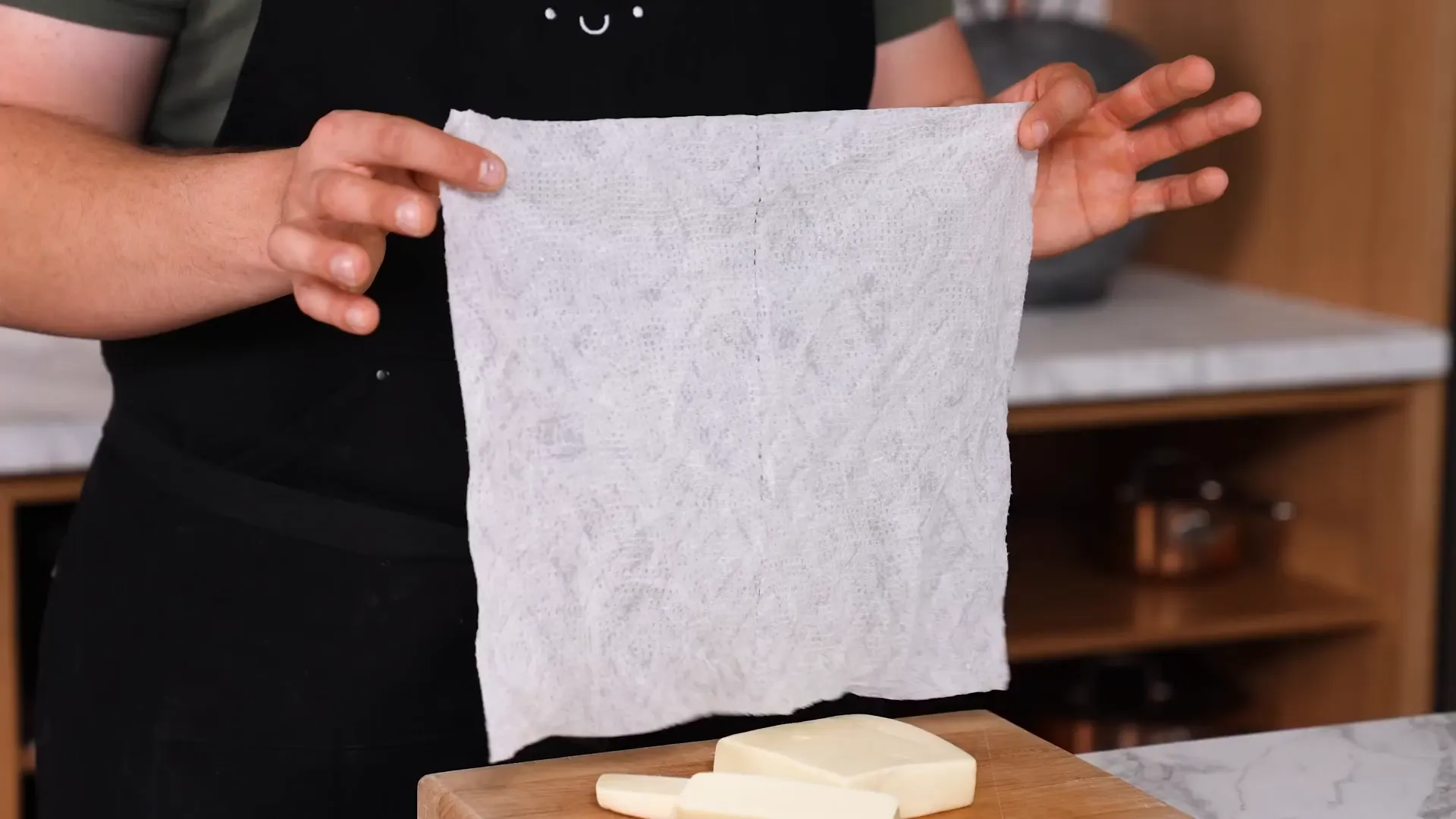
Step 8: Extra Tips for Flavor and Presentation
Toast Your Spices
To double or triple the flavor of your spices, toast them in a dry pan before use. This releases essential oils and enhances aroma and taste.
Mount Butter to Finish Pan Sauces
After reducing a sauce, remove it from heat and swirl in cold unsalted butter. This technique, called mounting, thickens the sauce and gives it a velvety, glossy finish.
Use a Ring Mold for Perfect Shapes
Want your hash browns, pancakes, or other pan-cooked foods to look professional? Use a metal ring mold or biscuit cutter to cook them in a perfect circle.
Keep Herbs Fresh Longer
Store herbs in a container lined with a dry or lightly damp paper towel. Roll the herbs gently, cover, and refrigerate. They’ll last twice as long this way.
Step 9: Final Chef Secrets for the Home Cook
Taste for Salt Like a Pro
Salt is often the make-or-break ingredient. Start with less than you think you need, taste, and add incrementally. Remember, acid and sugar reduce salt’s effect, so you may need more. Use different salts for different purposes: flaky salt for finishing, kosher salt for seasoning, and fine sea salt for cold dishes or desserts.
Drink Water Like a Chef
Here’s a fun one: take a clean storage container with a spout, cut an X on the lid, insert a straw, and enjoy a spill-free drink while cooking. It’s a little restaurant secret I love!

These 100 hacks are designed to make cooking recipes at home easier, faster, and tastier. Whether you’re crafting a classic american recipe or experimenting with new flavors, these tips will elevate your kitchen game. Remember, cooking is about enjoying the process as much as the final dish—so have fun, experiment, and don’t be afraid to try these hacks yourself!
Happy cooking!
This article was created from the video 100 Food Hacks I Learned In Restaurants with the help of AI.
100 Chef Hacks to Elevate Your Cooking Recipe: Master Tasty American Recipes at Home. There are any 100 Chef Hacks to Elevate Your Cooking Recipe: Master Tasty American Recipes at Home in here.
